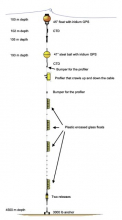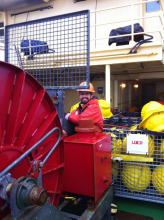Atmospheric Conditions and Arctic Climate
What Are They Doing?
Aerosols are small, solid, particles like dust, smoke, and smog which are suspended in the air. Aerosols are generated by a variety of natural and man-made sources such as fossil fuel combustion, forest fires, and dust storms. Because aerosols have the ability to diffuse light coming from the sun, they may actually have a cooling impact on our Earth’s climate and the Greenland Ice Sheet.
In order to study the effect of aerosols on the arctic and the Greenland Ice Sheet, the research team took snow and air samples to measure the amount of aerosols. By looking at snow surface properties and chemistry the research team explored connections between aerosols and the snow surface albedo, or reflectivity.
The Greenland Ice Sheet plays a key role in regulating global climate. It also stores a large volume of fresh water. If it melts, it has the potential to cause sea level to rise. It is important to understand how air pollutants impact the climate of the Arctic, because changes in the Greenland Ice Sheet could affect places and people around the world. Better understanding the effects of aerosols would allow us to predict or adapt to some of these changes.








